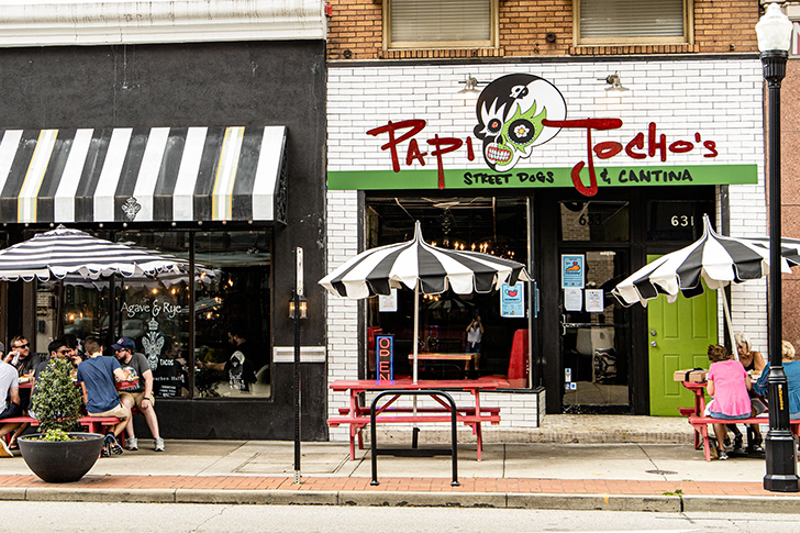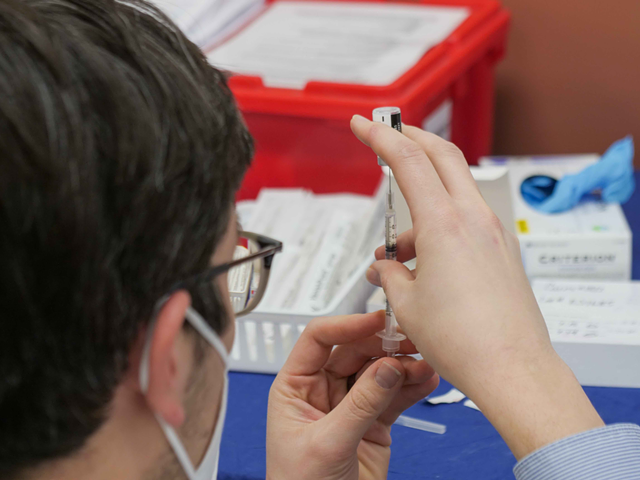Businesses and sports venues in Kentucky and Ohio could be filled with more money-spending bodies soon, officials say — as long as coronavirus-prevention protocols remain in place.
In recent briefings, Kentucky Gov. Andy Beshear and Ohio Gov. Mike DeWine highlight plans for residents to tiptoe back into “normal” life, thanks to sustained downward trends for COVID-19 figures in both states.
In a March 1 briefing, Beshear said that beginning Friday, March 5, specific businesses may increase their maximum capacity to 60%, up 10% from previous capacity restrictions.
The update includes 18 industries, such as nail salons, movie theaters, funeral and memorial services, bars and restaurants, hair salons, fitness centers, retail, office-based businesses and more.
Beshear says the loosening of restrictions comes after the state had reported its lowest count of new COVID-19 cases in roughly 5 months, reaching its seventh continuous week of case decline.
“Today, we have more good news than at any time in the pandemic. We’ve never seen what we are seeing now in terms of a downward trend,” Beshear says. “Previously, we had experienced only three consecutive weeks of declining cases. COVID hospitalizations, ICU admittance and those needing a ventilator have either decreased or stabilized.”
“This capacity increase is an initial step where we will watch and see to ensure we don’t see a corresponding increase in cases,” he adds.
Kentucky entered phase 1c in its vaccine roll-out plan on March 1, meaning that residents over the age of 60, residents 16 years or older with CDC high-risk C19 risk conditions and all essential workers can get vaccinated against COVID-19.
In his briefing, Beshear also noted that the recently authorized Johnson & Johnson one-shot vaccines will arrive this week and will be distributed to independent pharmacies across the state.
In Ohio, DeWine also is loosening restrictions, but a bit more conservatively than Beshear is doing in Kentucky.
During a Feb. 25 briefing, the governor announced that outdoor events within the state — including those held in sports venues — would be capped at 30% capacity.
This means that matches at the Cincinnati Reds’ Great American Ball Park, FC Cincinnati’s West End Stadium, the Cincinnati Bengals’ Paul Brown Stadium and others once again would welcome fans in person as opposed to virtually.
Previously, Ohio had limited in-person attendance at sports events to 15% or 1,500 fans, whichever was fewer. Some teams had requested and had been granted variances that allowed for a higher attendance.
Fans will be grouped into pods of six, with DeWine recommending that those pods be made up of people from within a single household. Pods will be separated by at least six feet. General, non-seated admission will be permitted only if masks are worn and if six-foot distancing can be maintained.
Players and staff on the Cincinnati Reds had reportedly tested positive for COVID-19 in 2020. Across MLB, teams were found to not have followed masking, distancing or “bubble” protocol for employees or fans throughout the season.
Opening Day for the Cincinnati Reds is April 1. The Dayton Dragons, the Reds’ high-A affiliate, begin play in May. MLS team FC Cincinnati opens play in April.
Indoor entertainment events in Ohio also will resume, but at a maximum capacity of 25%.
For the looser restrictions to continue, all venues — both indoor and outdoor — must follow established precautions such as mandatory mask wearing for employees and customers as well as social distancing.
DeWine also stresses that COVID-19 numbers must continue to fall.
“The vaccines have given us great hope, but until we have enough Ohioans vaccinated, we must continue masking and social distancing,” DeWine says. “Easing up on some prevention measures is intended to serve as a starting point. If the trajectory of cases, hospitalizations, and deaths continues downward, we hope to be able to relax more of these measures. If it gets worse, we may have to tighten up.”
DeWine says that guidance about proms, weddings, parades and other entertainment options in Ohio is coming soon.
DeWine also notes that health officials are closely watching the development of new variants. A U.K. variant has made its way through at least six counties in Ohio, including Hamilton County.
In Kentucky, there were 405,126 confirmed and probable cases reported as of March 2, with 4,652 confirmed and probate deaths.
As of Feb. 25, there were 962,404 confirmed and probable cases of COVID-19 reported in Ohio, with 17,125 confirmed and probable COVID-19 deaths.
Nationally, there have been more than 500,000 COVID-19 deaths, a milestone that was reached on Feb. 22.






